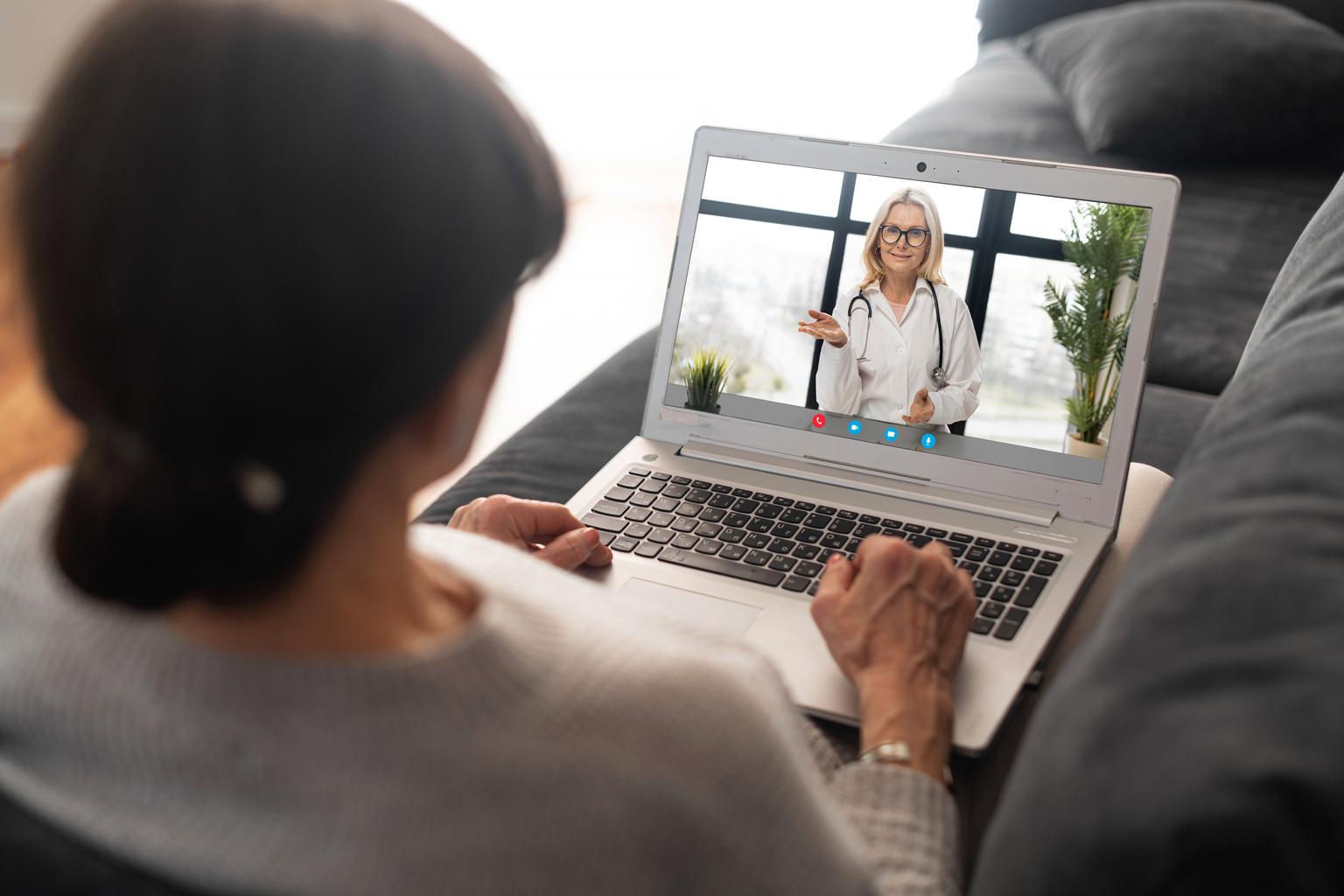PPE makes forging real connections with patients a challenge. Here are three tips for connecting with patients through masks and other gear.
One of the many impacts of the COVID-19 pandemic is that the personal protective equipment (PPE) we wear has made connecting with patients -- really connecting -- more challenging than ever. Helmets, goggles and face shields seem to go beyond a physical barrier to create an emotional one. Masks, while essential, muffle our voices and obscure facial expressions. Even protective suits hide the flavor, color and fun of our individual fashion choices.
The connections we forge with patients, frequently quite rapidly, are central to our work, though. In the face of illness or injury, the solidarity physicians and patients co-create is healing in and of itself. It's the space where information, understanding and the therapeutic milk of human kindness flow. And frankly, it's not healing for the patient alone. For many physicians, those flashes of genuine human connection are the most memorable and enjoyable part of our days and hence, our professional lives. Should COVID-19 be entitled to take that from us? I think not.
3 tips for connecting with patients despite PPE
1. Personalize PPE
Stories abound in the news and on social media of the creative ways physicians and nurses have altered their PPE to inspire joy and connection. Dr. Sarah Christensen, a general pediatrician in Medford, Oregon, gave her helmet with face shield a unique, child-friendly flair. She recruited a local company to transform her forester's helmet, making herself resemble R2-D2 of "Star Wars" fame, as FOX 26 reports.
Others have taken the simple but powerful step of taping a photo of themselves to the outside of a gown or disposable suit. According to Insider, Dr. Joseph Varon of United Memorial Medical Center in Houston and his co-workers have all adopted this practice. "Varon believes that giving patients hope through a friendly face is '50% of the battle.'"
2. Unmask your smile
In the 1860s, Louis Pasteur did the groundbreaking work that produced germ theory, thereby unwittingly foreshadowing the development of all the PPE we wear today. In a quirky historical coincidence, it was in that same decade that Guillaume Duchenne (yes, that Duchenne of Duchenne's muscular dystrophy) explored the mechanics of facial expression, including the very smiles largely hidden by today's masks.
A neurologist, Duchenne detailed the facial movements of various kinds of smiles, among them the sincerest, later dubbed the Duchenne smile. He observed that honest smiles rely not only on the movements of the mouth but on the cheeks and, above all, on the eyes. "In his 1862 book 'Mecanisme de la Physionomie Humaine,'" reports the Association for Psychological Science, "Duchenne wrote that the zygomatic major can be willed into action, but that only the 'sweet emotions of the soul' force the orbicularis oculi to contract. 'Its inertia, in smiling,' Duchenne wrote, 'unmasks a false friend.'"
By 1872, Charles Darwin had published "The Expression of the Emotions in Man and Animals," asserting that humans around the world display diverse emotions through facial expressions universally understood without regard to culture or upbringing. If Duchenne and Darwin were right, then our patients can see our smiles above our masks, as long as our smiles spring genuinely from the heart.
More recently, fascinating research published in Psychological Science documents an association between intense, full-face smiles and longevity. Apparently, it's good for our health to engage in repeated flashes of joy. Given that physician burnout has threatened to rob us all of our Duchenne smiles in recent decades, I wonder whether we might reframe the protective benefits of our masks to include increasing physician longevity through the deployment of deep, eye-centric smiles.
Don't misunderstand; I would never suggest that we can fix physician burnout by simply trying to smile harder. I wonder, though, if we might allow ourselves to perceive our cumbersome masks as an invitation to briefly settle into the space in our hearts where our truest smiles reside, trusting that only those smiles will be perceived above the mask and sharing them with our patients and ourselves at every opportunity. Might they not initiate a virtuous cycle? After all, for many physicians, deep, even if brief, connection with patients mitigates, at least to a degree, against that burnt out feeling, returning us to a place of fulfillment.
3. Tap the power of body language and tone of voice
In the 1970s, research psychologist Albert Mehrabian built upon the work of scientists like Duchenne by exploring the power of nonverbal cues and tone in the communication of emotion. He is perhaps best known for his work concerning inconsistent communications, in which subjects received mixed or conflicting data from a person communicating emotional content. He found that when data were confusing, listeners placed a vastly higher value on facial expression, body language and tone than on the words spoken.
Certainly, the same is true in healthcare. As Dr. Bradley Block and his guest explore in a recent episode of the "Physician's Guide to Doctoring" podcast, patients long for words of welcome and gestures of hospitality from us. Studies have shown that when physicians simply choose to sit down, patients perceive us as less rushed, just as if they were a guest in our home. In fact, patients estimate that the physician has been present longer when the physician is seated compared to when they are standing.
We further reinforce the connection in simple ways. An open posture with uncrossed arms, shoulders back, orienting the axis of our body directly toward the patient, leaning in attentively and a nod of the head all hint at curiosity and welcome more than most words ever could. They say, "I'm present, accounted for and interested in you."
As we navigate this very strange era of COVID-19, I sometimes wonder whether we might consider reframing the challenge of connecting with patients despite all the PPE as a call to a mission to hone and nourish our bedside manner. Should we choose to accept it, learning to consistently find those glimmers of connection from behind the masks will make us bedside ninjas. These lessons can become something of value that no germ can take away.





